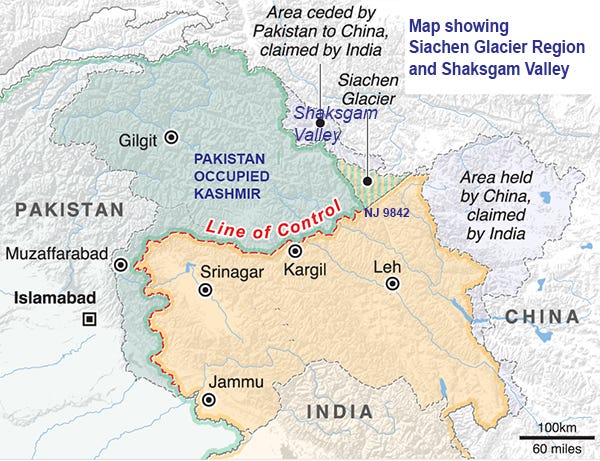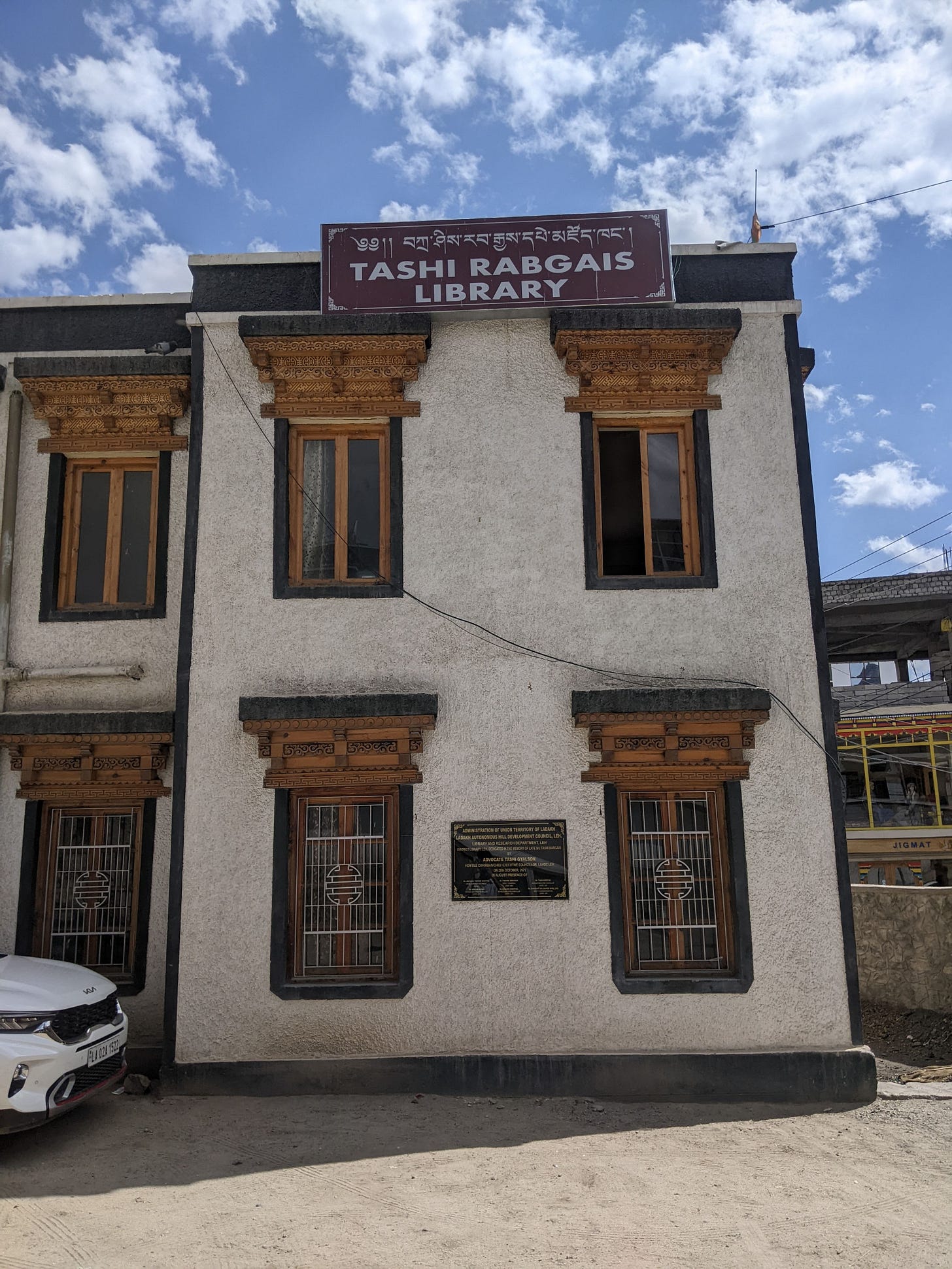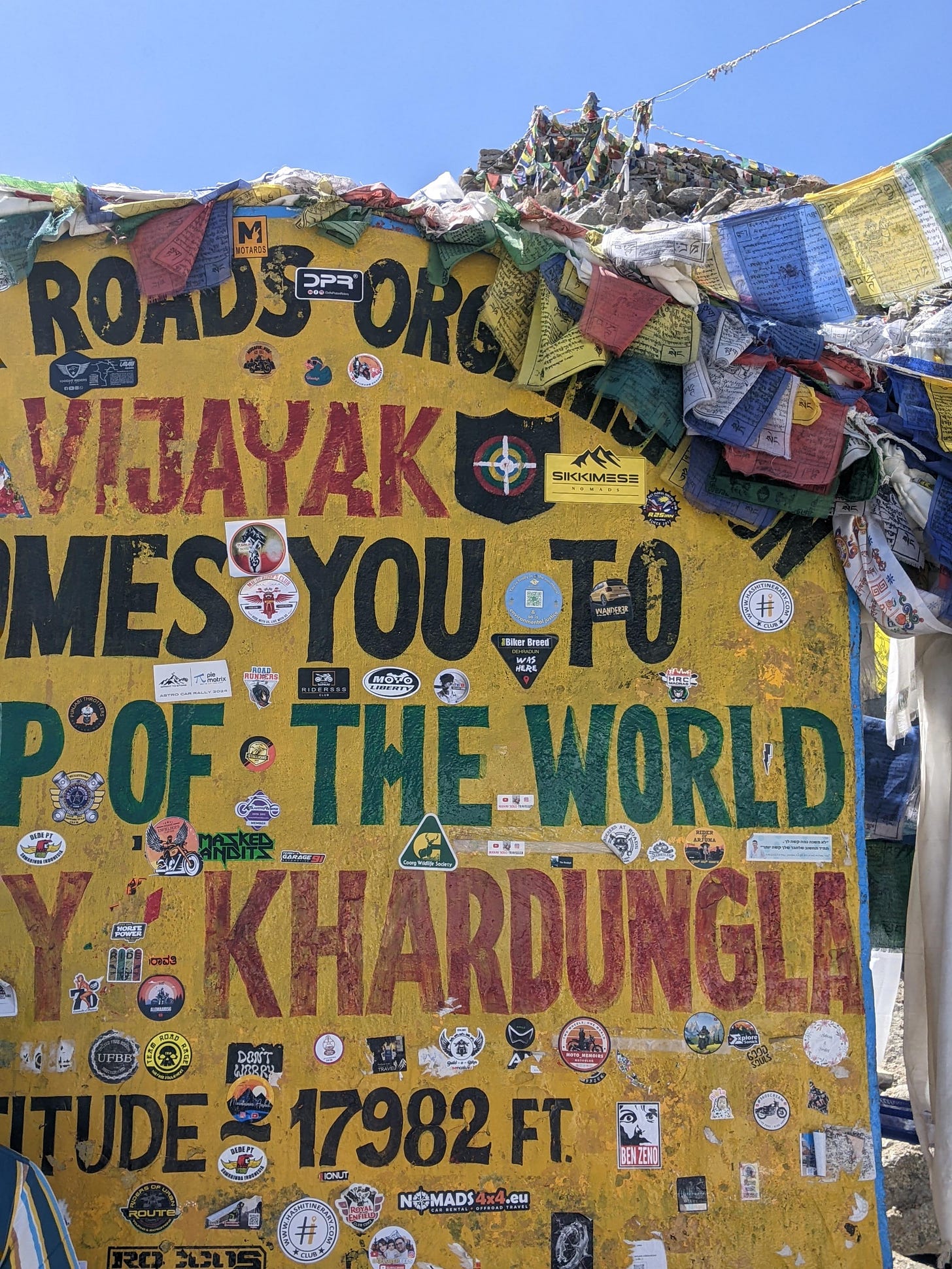[Hi there! This is going to be our most special newsletter series! If you liked our feature on the Chamba valley, these ones are a hundred percent for you. We know—this one comes after a few quiet months—but sharing real experiences is one of our core values. Those that demonstrate our work as a nonprofit for and from the third pole. What follows is as real as it can get. It’s got special anecdotes, photos and videos from some of the most elusive and inaccessible parts of the third pole—located in Ladakh, India—specifically chosen to demonstrate our ongoing environmental justice work.]
Ladakh (or La Dak/La-Dvags, meaning the land of high passes) is located in a complicated and contested environment—best introduced through a set of maps:



People across the world know this region as “Kashmir” which—although it’s convenient—is ultimately inaccurate. Ladakh is a distinct religious (dominated by Buddhism and Islam), cultural, historical and geographical part of high mountain India, spanning the Himalayas, Transhimalaya and Karakoram ranges of the third pole. It shares land borders with Tibet, East Turkestan, Afghanistan and Pakistan.
Have a look at these photographs from the Central Asian Museum in Leh, the biggest city of Ladakh. The fact that Leh has such a museum is so interesting to us, showing just how connected Ladakh and Central Asia must have been before the advent of nation states as we see them today.
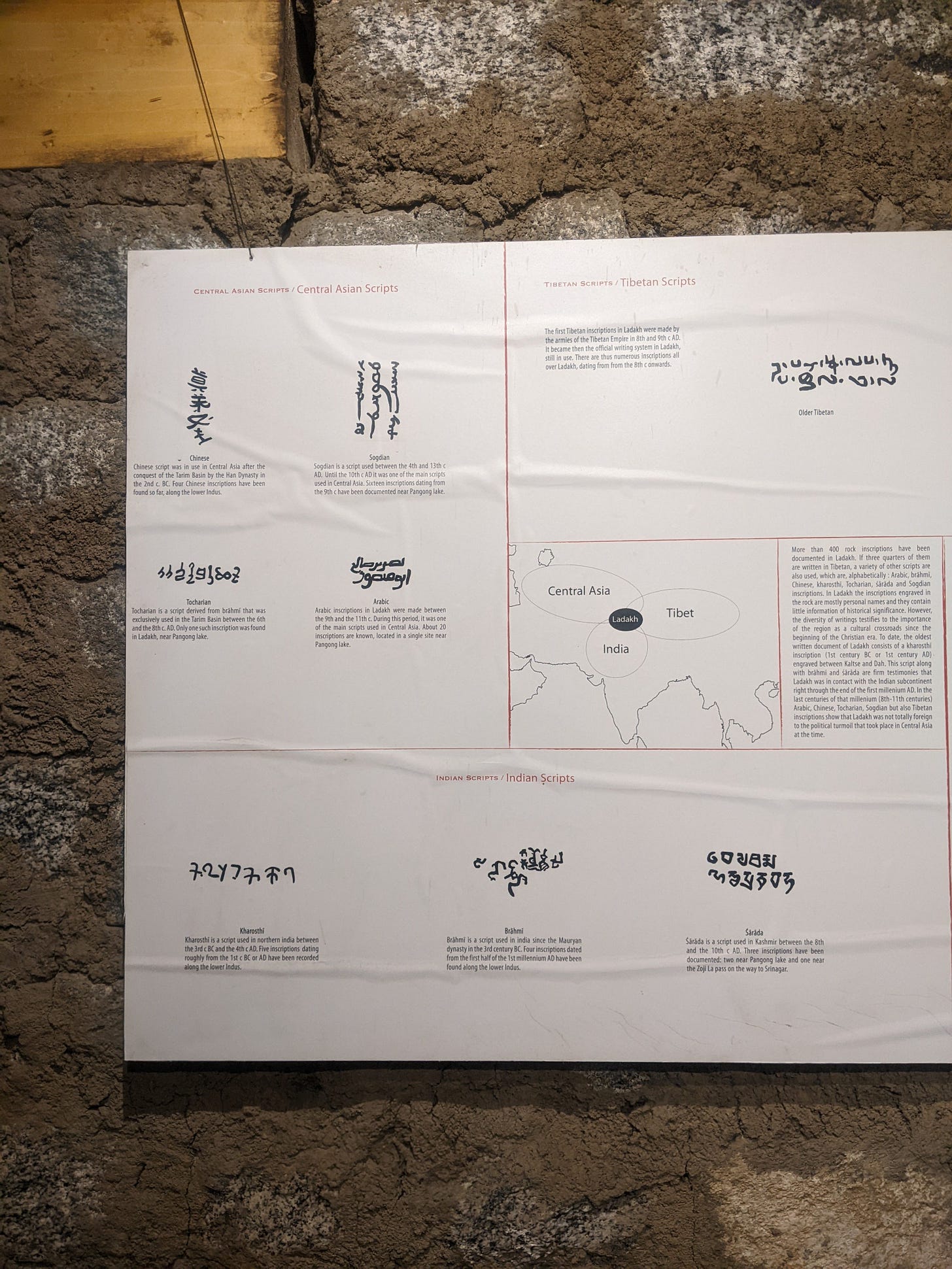
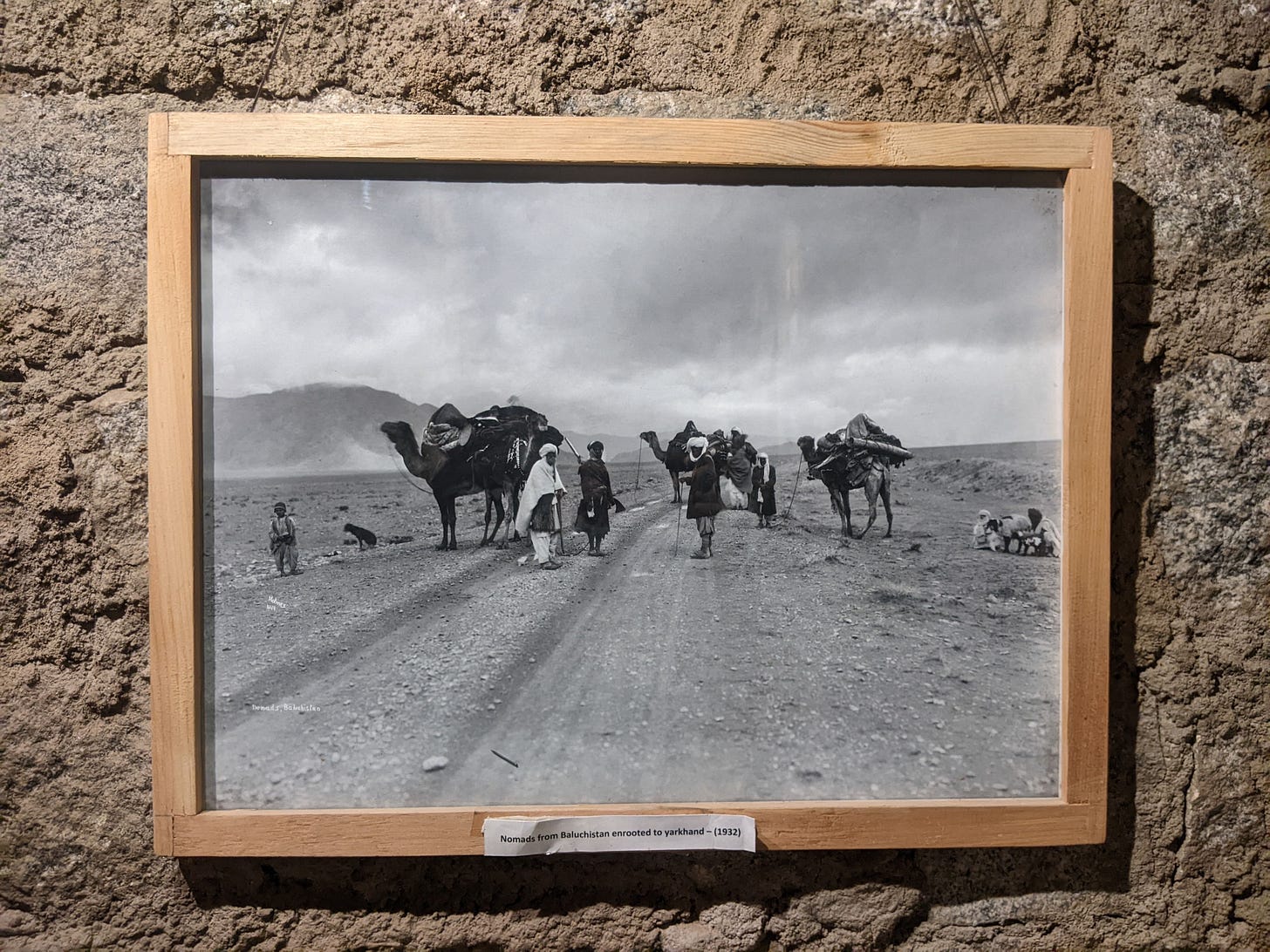
Many of these influences from across Asia are unfortunately disappearing as the years go by. There is, in fact a lot of western money that is coming in—to restore time worn cultural pieces, whether that be art or architecture. Have a look at these images from Choskor House, a heritage restoration project, funded by the German Embassy:
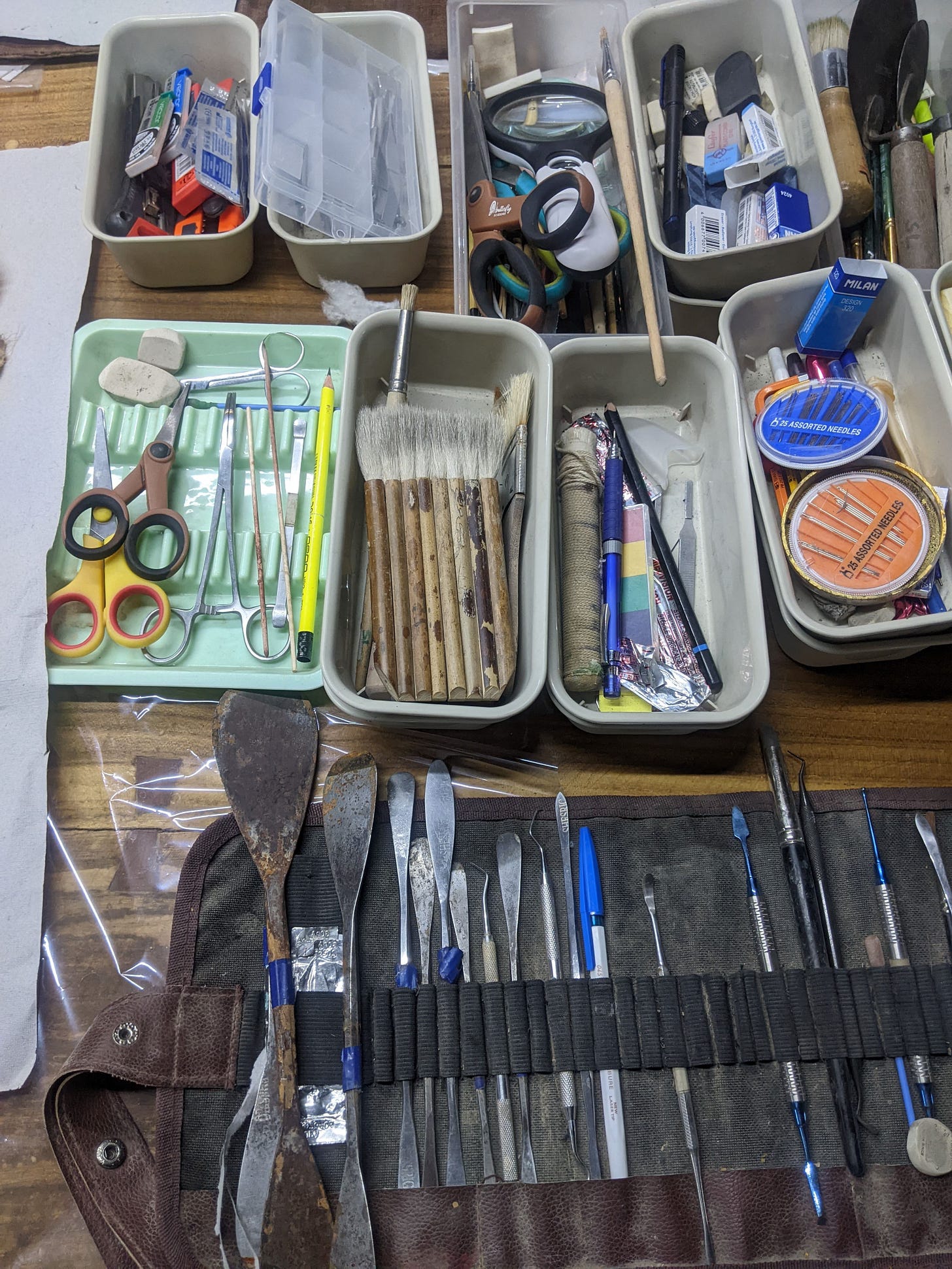

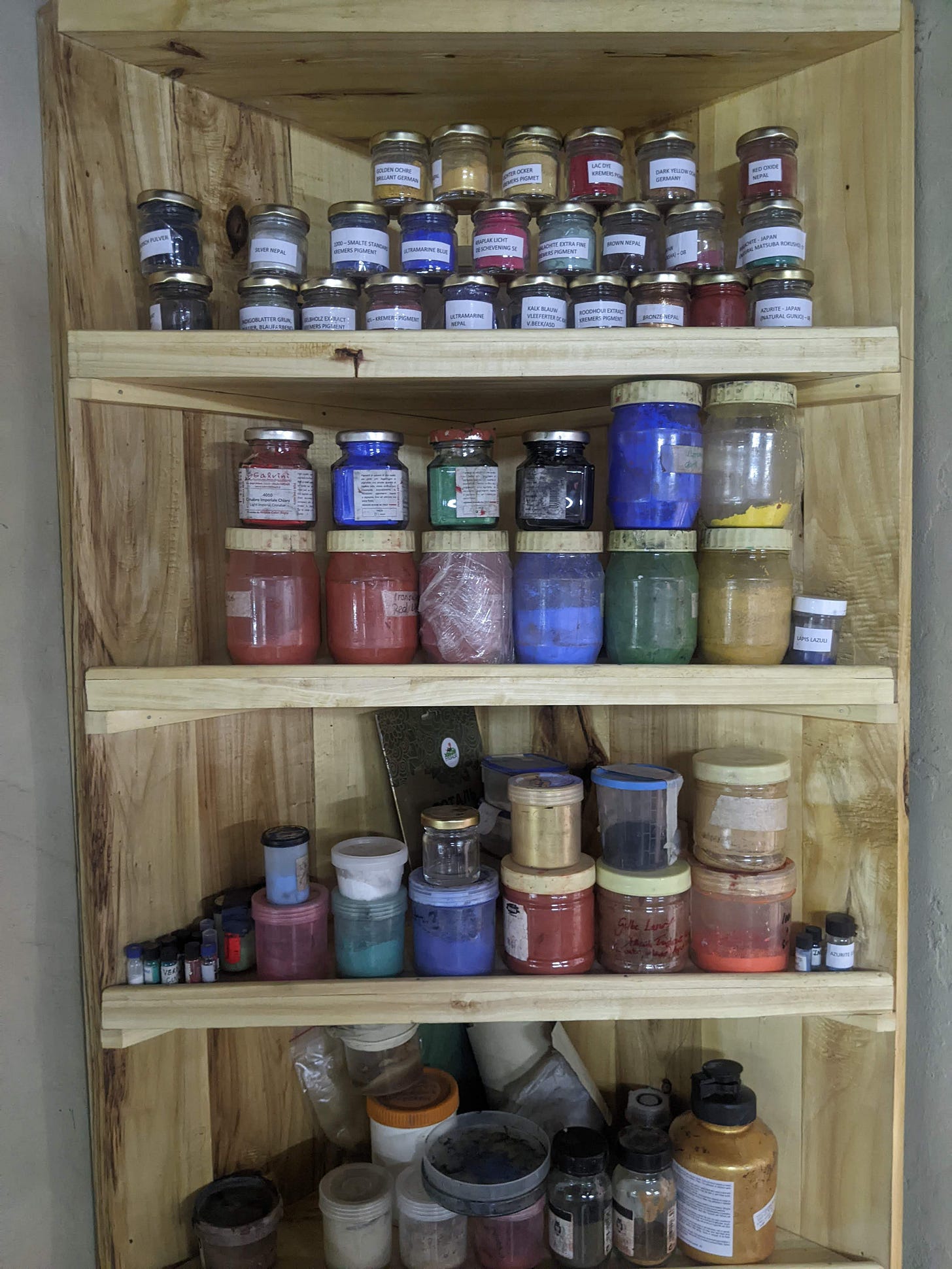
Choskor house was a perfect setting really, to place one of our environmental justice stickers right outside, and we did! After all, justice goes really well with restoration doesn’t it?
These stickers have dynamic QR codes printed on to them—which means that they are portals to our entire body of environmental justice work, including most recently, some extensive disclosures we’ve gotten from the Indian state regarding its climate change policy
[We’re casually dropping this disclosure news here but it’s huge for us and hopefully environmental justice in the third pole too—if you want to get into granular technicality about Indian climate policy, as told directly by the Indian state—check these out.]
A ten minute walk away is Lala’s cafe, another super cool heritage restoration project, supported by Tibet Heritage Fund—that also supports restoration across the old town.
We came across this amazing project called “Himalayan Bauhaus” in the middle of the ruins of old Leh and quickly seized the opportunity to put a sticker right in front:
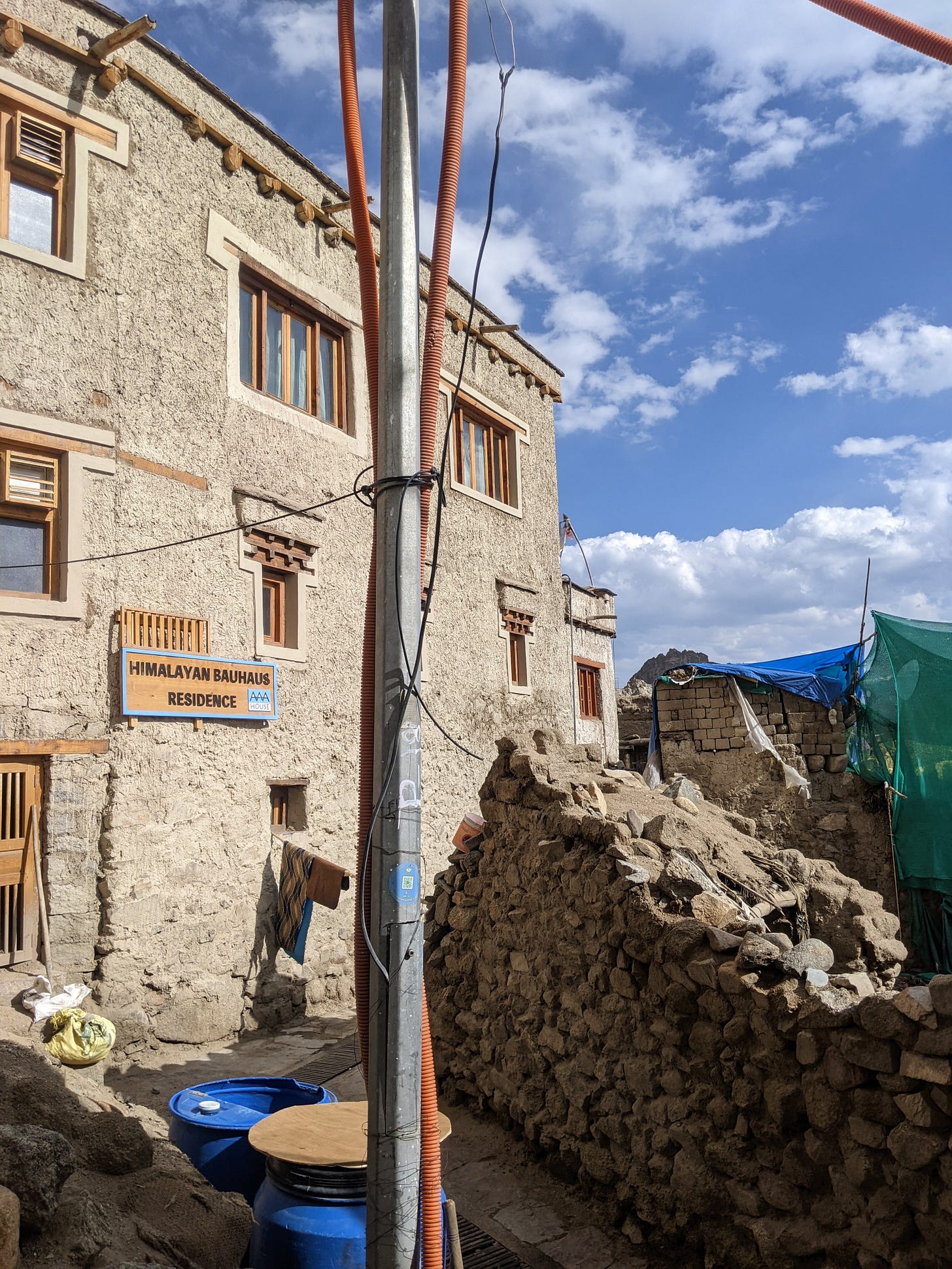
Restoration lies in food too—Ladakhi food, full of hand rolled pastas, apricot preserves, leavened bread pockets, sea buckthorn juice and much more. De Khambir is a Ladakhi cafe that specializes in traditional food—and it has a small library too—perfect for our paperback!
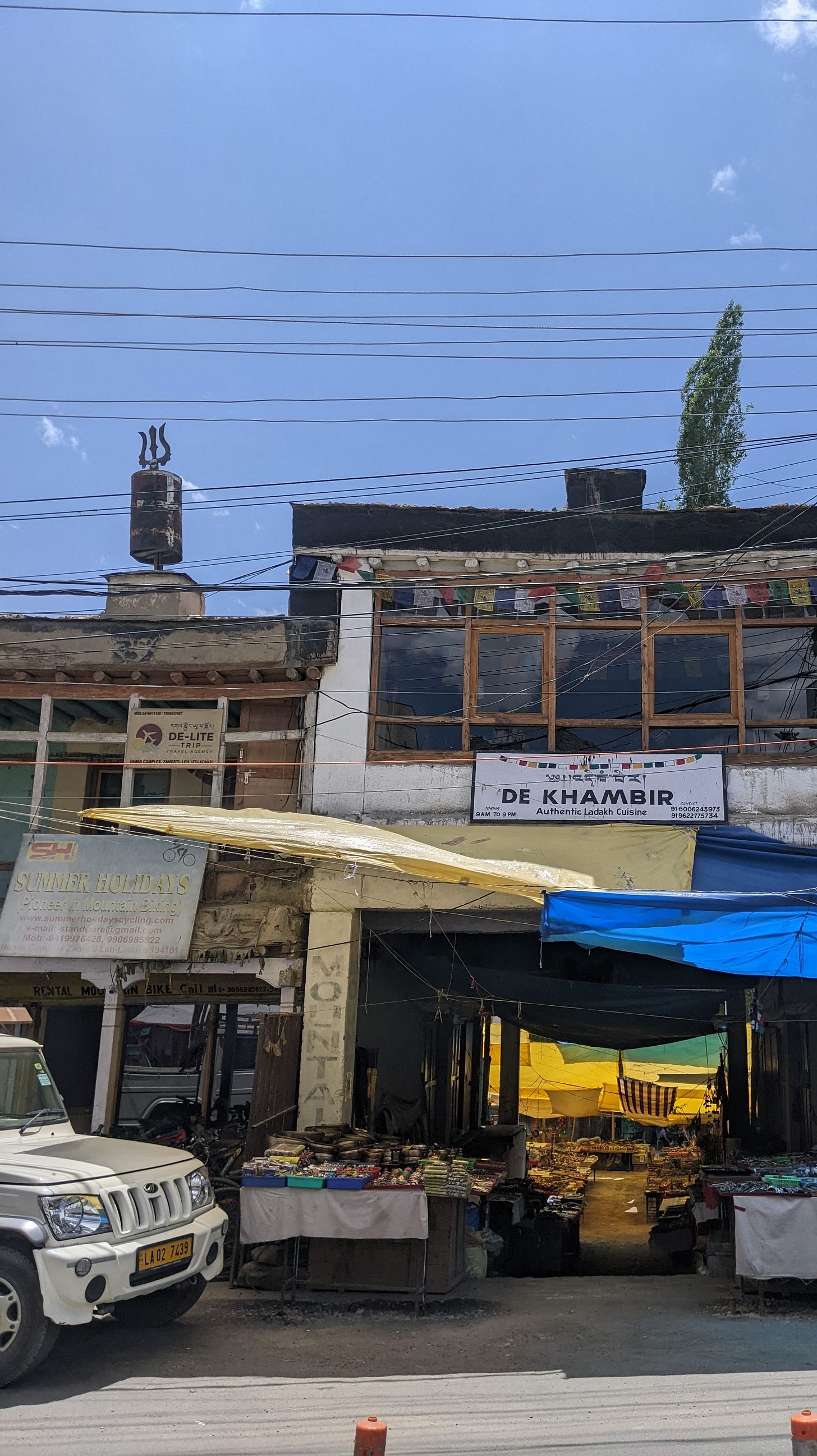
Again, a ten minute walk from De Khambir stood the District Library, hosting one of the largest collections of books in Ladakh, at thirty five thousand. Although the Library at Leh was open, we weren’t so lucky with its branch at Diskit. Undeterred, we tracked down the Peon at Diskit and got her to open the closed building to leave another paperback there with a short message written for the future generations of Ladakh:
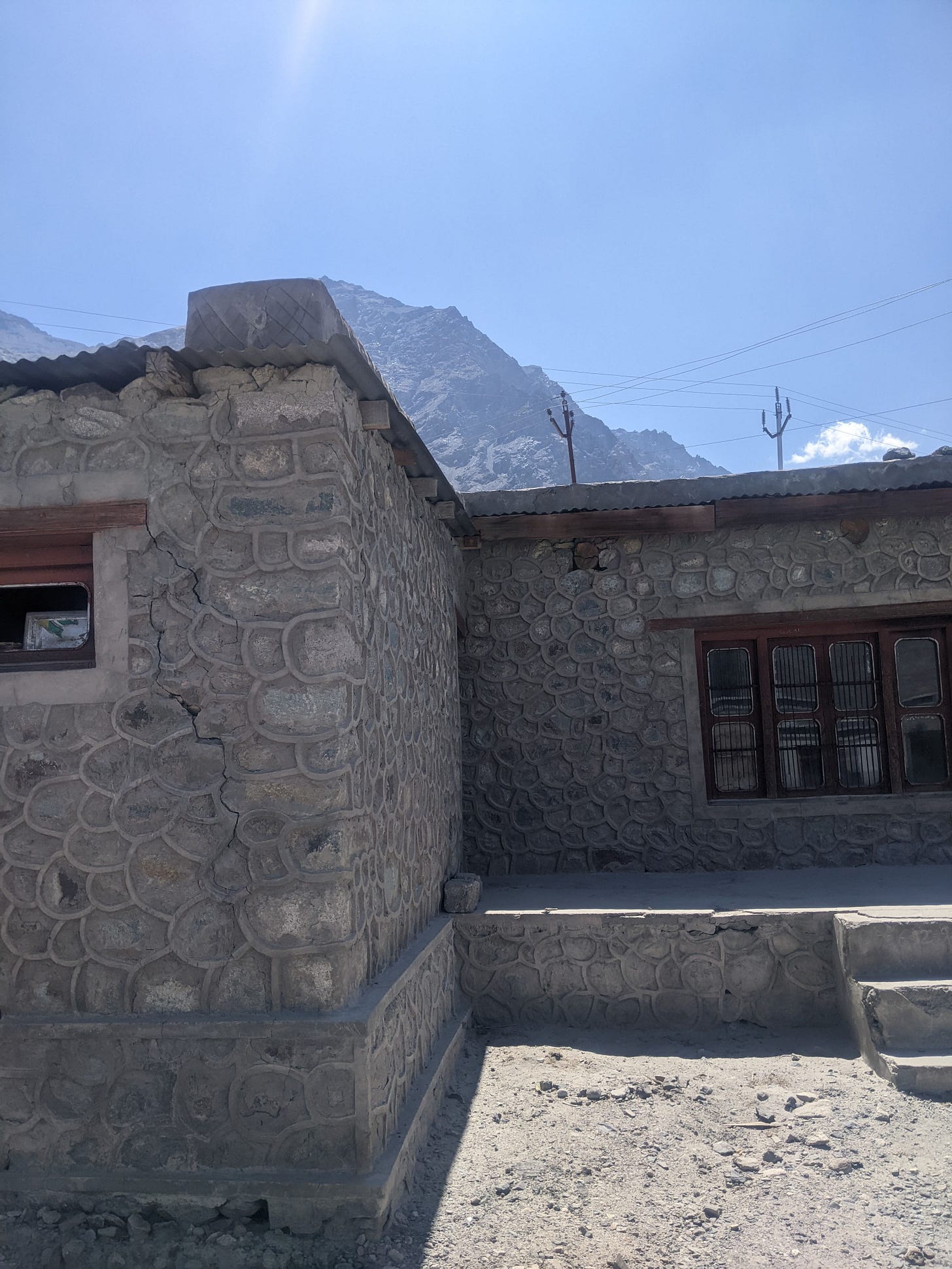
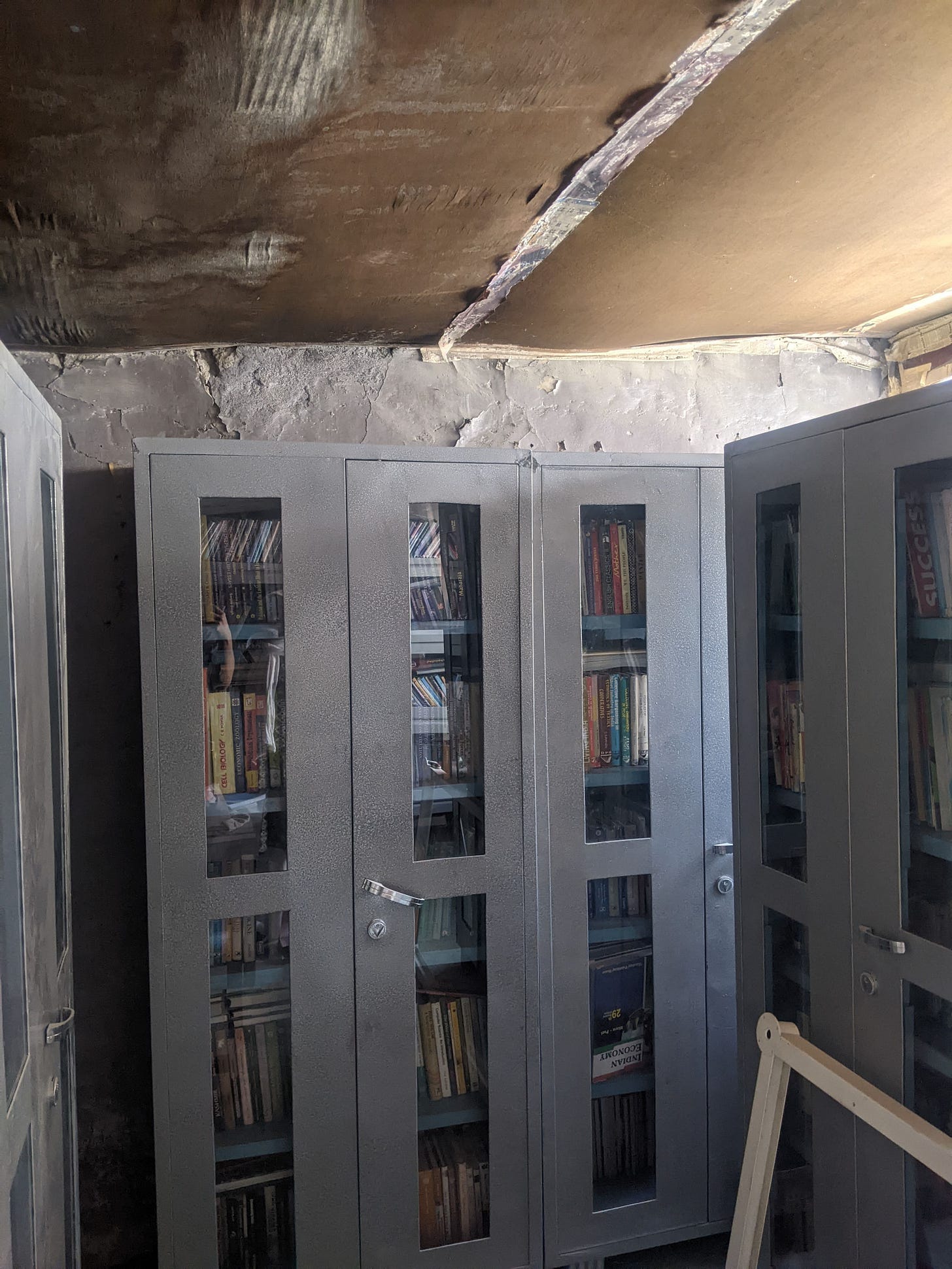
Two days of acclimatization later, we packed up and made the move towards the border regions—Turtuk, Thang, and the Siachen Glacier in the Baltistan region bordering Pakistan Occupied Gilgit Baltistan and China Occupied Shaksgam valley. More on that in the next newsletter!
To reach those frontline areas though, we had to cross Khardung La (Pass) at 17,982 feet or 5480 meters above sea level, just shy of Europe’s highest peak, Mount Elbrus at 5642 meters above sea level. Here’s our sticker at the milestone:
Happy monsoons (stay safe)!
Himalayan Advocacy Center
Postscript:
As you may know, we are a small non profit in the environment + law space located in the Indian Himalayas. We are completely bootstrapped! This means no foreign funding and no fancy headquarters - just a small community - of which you all are an integral part - in the long run we hope!
What’s more - we, at the Center, are determined to localise efforts for the planet, without compromising on the best that the law has to offer. If you have the means, and want to support a committed local undertaking, please do consider contributing to our corpus. We hope to pleasantly surprise you with detailed information on where you money has been spent.




